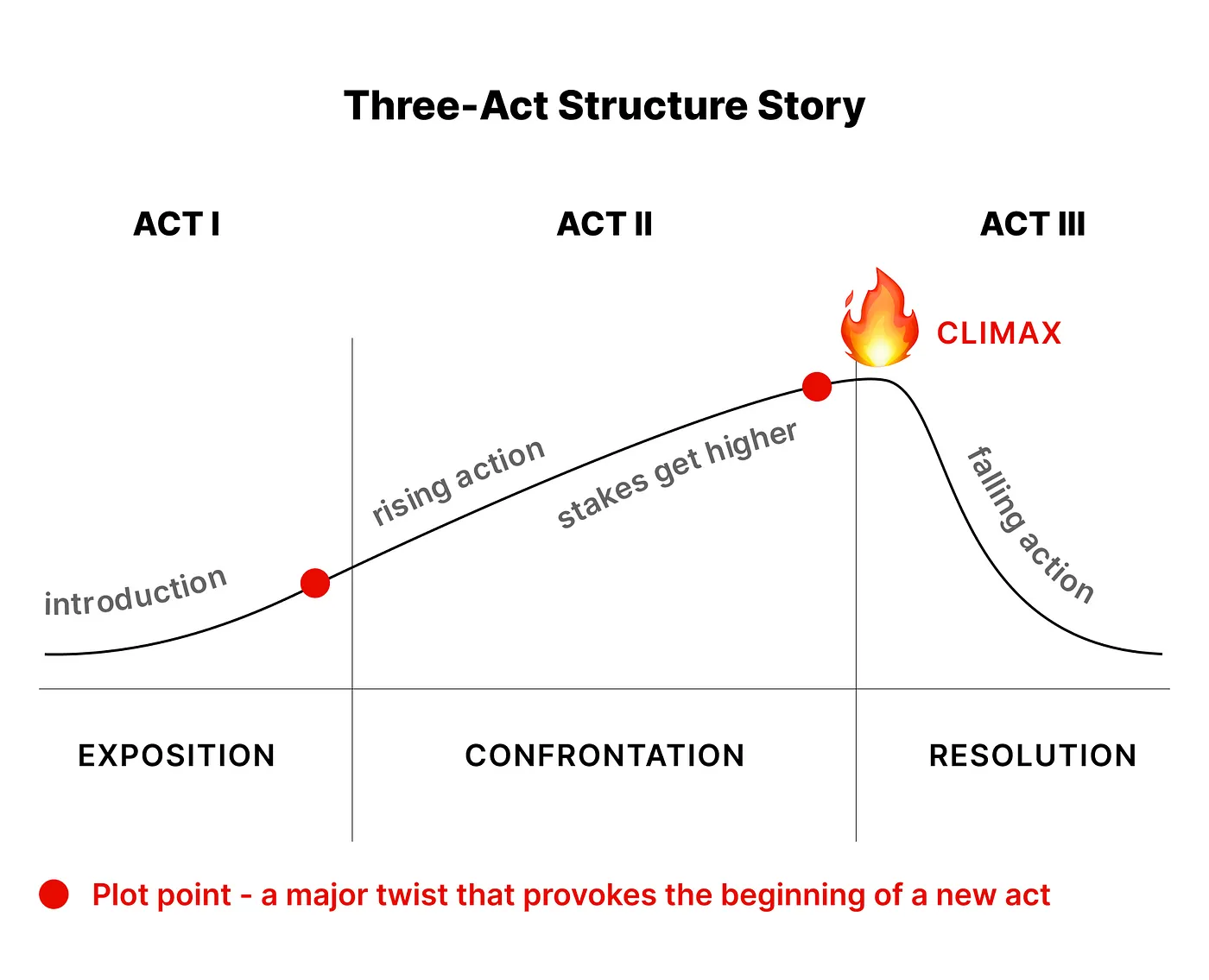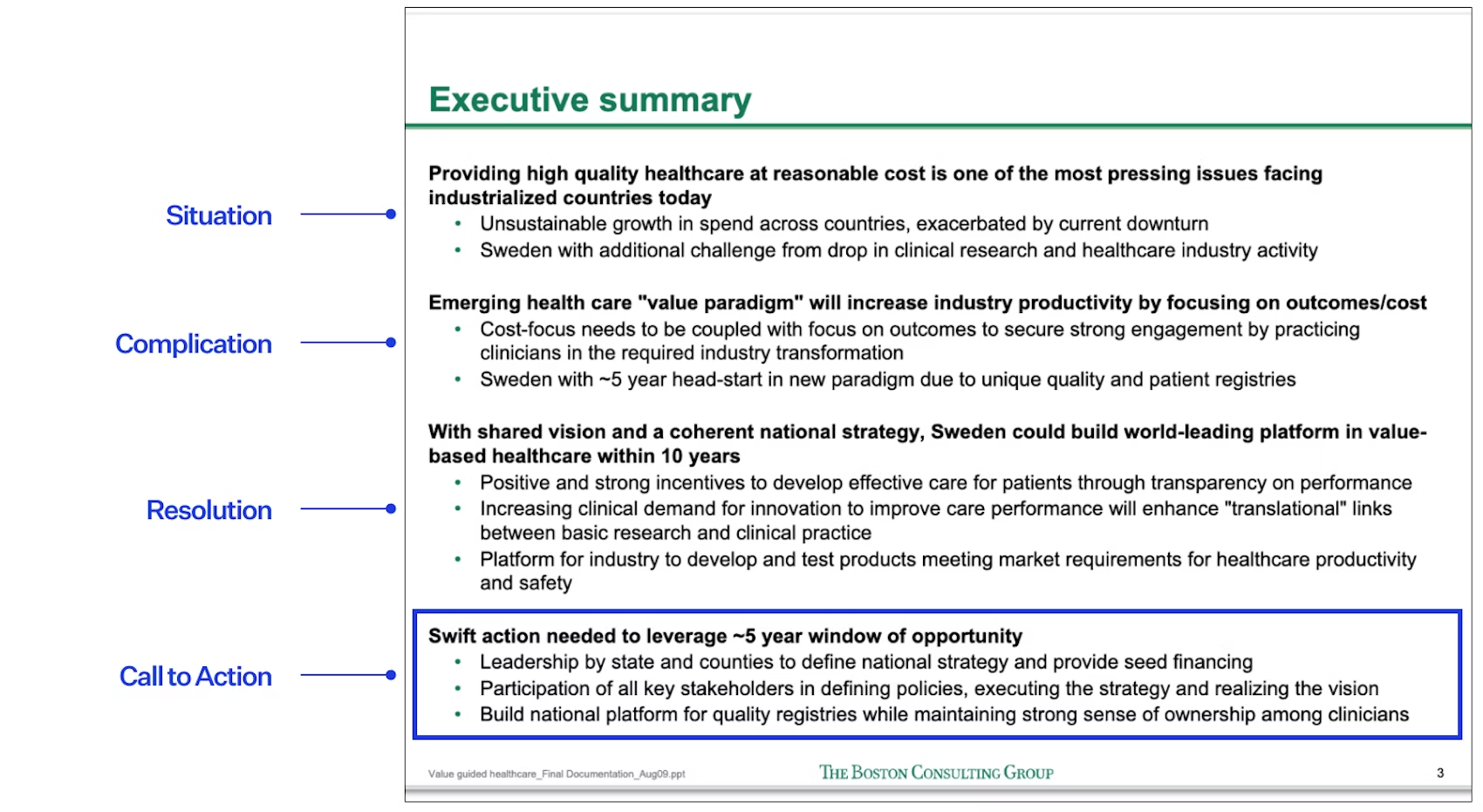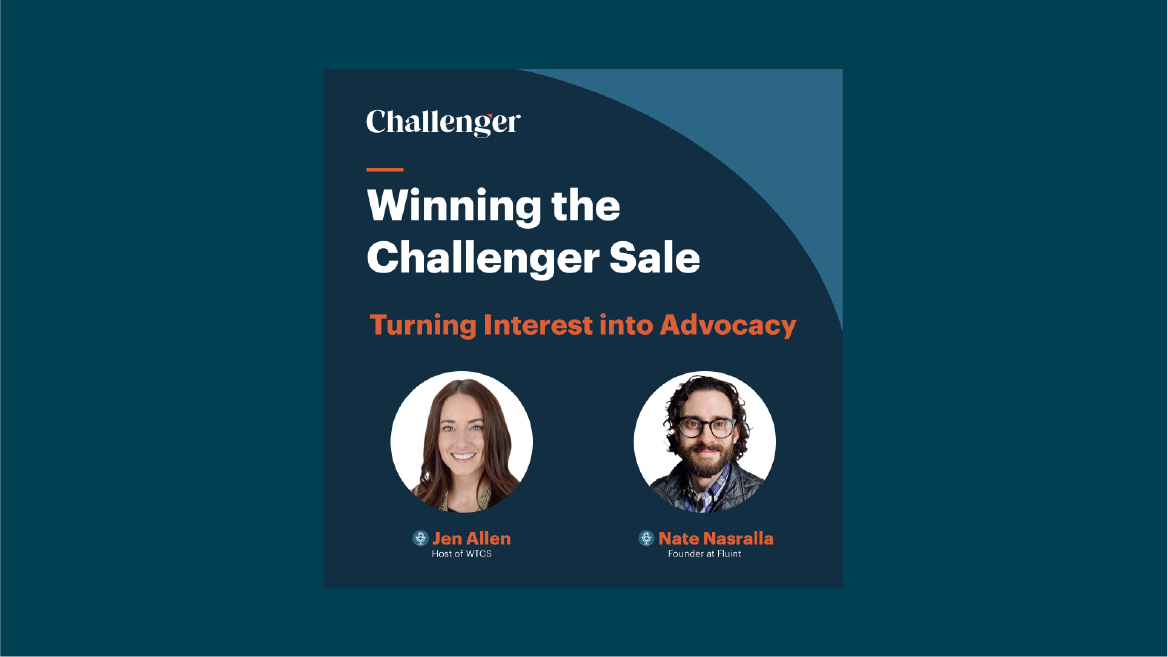The 3-Part Business Case Framework That’ll Make an Executive Think They’re Already Paying You


SVP: “So how long do we have your team engaged for?”
Me: “How long?”
(^ I'm slightly confused here)
SVP: “Yeah, did we just sign on for this year, or did we setup a longer-term thing?”
Me: “Oh, well neither, that’s what we're trying to figure out. If and how we'll structure our work together.”
SVP: “You mean we haven’t actually bought anything from you?”
Me: “So far… yes, that’s right.”
SVP: “That’s surprising.”
^that’s an actual transcript excerpt from early 2022, with a $5B cloud communications company.
The SVP assumed we had some type of consulting / services retainer setup.
The type they’d typically spend $100K+ on, easily.
But that wasn’t the case. We were just running our sales process, and we’d been paid $0 to date.
The SVP made that assumption because our:
- Discovery went deep with specific datapoints.
- Messaging was sharp and said “we get you.”
- Recommendations were clear and direct.
Plus, everything we presented was built with two internal champions, in their branding.
Here’s why I’m telling you all this:
When an executive is surprised they’re not paying you yet, a contract is quick to follow. There’s no stalling on the decision, no back-and-forth over scope, and no friction with procurement.
It all happens, fast.
The back-half of your sales process melts by like butter dropped into a cast-iron skillet.
Here, I’m going to break down the framework we used to guide our discovery early in the deal, and then make our recommendation to the three SVP’s we were engaged with.
It’s called the SCR model.
The Situation, Complication, Recommendation (SCR) Framework
Second to the 1-Page Business Case, it’s the next most-used business case framework inside Fluint.
It was originally adapted by McKinsey, to help simplify a complex decision for an executive.
I say “adapted,” vs. “created,” because it’s essentially this 3-act story structure:

Here’s how each section of the framework comes together:
Situation
(What’s happening?)
- Start with the facts of what’s happening, and company priorities.
- Focus on framing points the committee already knows and accepts.
- If you don’t start with agreement here, your next sections fall apart.
Complication
(Why do something about it today?)
- This is why the situation requires action, now.
- And, why things will get much worse if left unresolved.
- Without building enough tension here, any decision to change will stall.
- Make sure to outline root causes too, which sets up your recommendation.
Recommendation
(What do we do, and how do we start?)
- The specific course of action you're recommending.
- Which will often be more than just “buy my product.”
- It’ll include a set of dates, projects, and people invested.
- Plus a short word on proof points and outcomes after acting.
Put together, it’ll flow like this:
.png)
Two Examples of the SCR Framework In Action
The first example is from BCG. Another well-known, top management consulting firm.
They put this together while advising Sweden on how to adapt its healthcare system. A pretty major decision, and this text likely represents between $1M - $5M of strategy work:

Now, back to that transcript excerpt above.
I can distill our entire sales process with that account into 3 concise bullet points:
- Situation: Marketshare has dropped from X% to Y%, as usage from our core VOIP (voice over IP) product continues to decline while customer communication preferences shift.
- Complication: We prioritized bringing real-time video to market, but our product is already lagging behind new market entrants, and marketing, channels, and sales needs stronger differentiation.
- Recommendation: Acquiring external technologies across both the communications and GTM spaces will be a faster path to market share in the next 5 years, than in-house, organic growth. Enabled by the right partner and platform, with targeted tech scouting.
How to Use the SCR Framework in a Way that Makes an Executive Surprised They’re Not Paying You Yet
My top 3 pro tips:
(1) Match your messaging to the exec’s level of problem awareness.
Notice I’m not explicitly adding the phrase “problem statement” above.
That’s because you can include problem statements in “S,” if they’re well-aware of a fire.
But naturally, you can add it into the “C” section as well.
(2) Flip the order to start with “R” for any RFP or active buying process.
Most deals stall for lack of decision and resistance to change.
But if the buying team’s past the “S” and “C,” and they’re actively looking at recommendations for who to partner with, jump to “R.”
Lead with the point, then back it up with “S” and “C” later to build buying confidence.
(3) Start this early, and adapt it over time with input from multiple contacts.
Two things happen when you write something down early in the deal:
- You realize how many gaps you have in your discovery.
- You get a much stronger reaction from the buying team to fill those gaps.
Especially from people who aren’t aligned.
Writing up a brief-but-brilliant summary can be harder than it looks.
So one option you can always consider is having Fluint turn your notes and call transcripts, into the first draft for you:
FAQ's on:
Why stop now?
You’re on a roll. Keep reading related write-up’s:
Draft with one click, go from DIY, to done-with-you AI
Get an executive-ready business case in seconds, built with your buyer's words and our AI.

Meet the sellers simplifying complex deals
Loved by top performers from 500+ companies with over $250M in closed-won revenue, across 19,900 deals managed with Fluint

Now getting more call transcripts into the tool so I can do more of that 1-click goodness.



The buying team literally skipped entire steps in the decision process after seeing our champion lay out the value for them.


Which is what Fluint lets me do: enable my champions, by making it easy for them to sell what matters to them and impacts their role.








